36+ Key Performance Indicators Examples to Download
In the dynamic world of business, understanding and optimizing performance is crucial. This article provides a comprehensive guide to Key Performance Indicators (KPIs), a tool that can help businesses measure their success and drive growth. We will delve into the process of creating KPIs, answer some frequently asked questions, and provide references to related articles for further reading.
1. KPI Performance Review Template
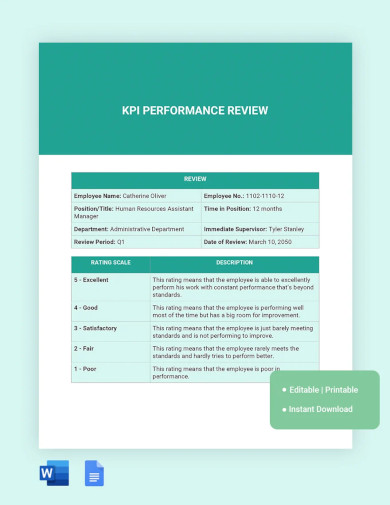
2. Free KPI Report Template

3. KPI Presentation Template

4. Free KPI Chart Template
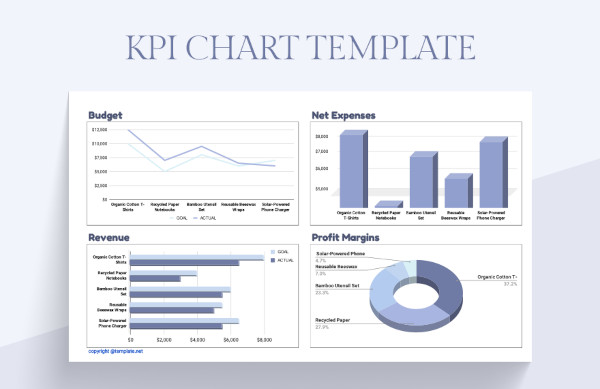
5. Free KPI Data Chart
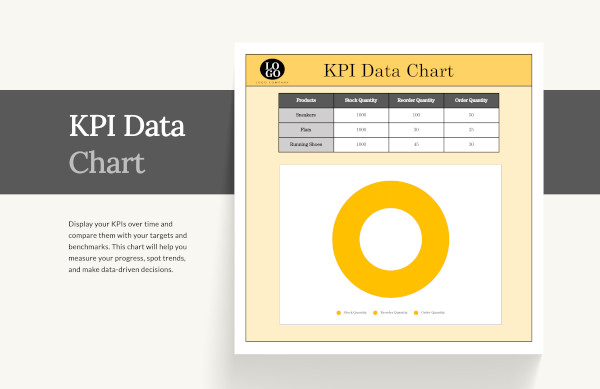
6. Guide to Key Performance Indicators Example
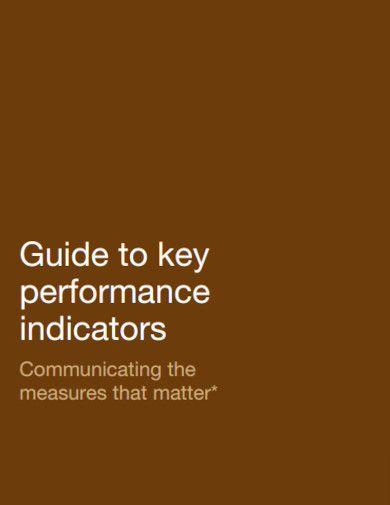
pwc.com
7. Basic Key Performance Indicators Example
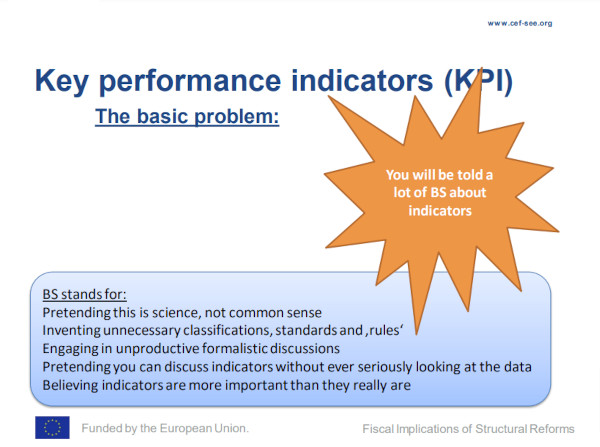
cef-see.org
8. Developing Meaningful KPIs Example
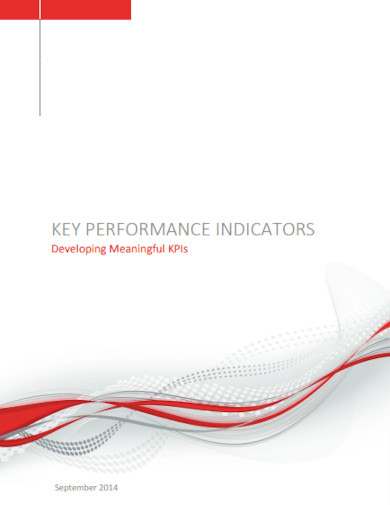
intrafocus.com
9. Measuring Registry Key Performance Indicators

learn.rarediseases.org
10. Editable Key Performance Indicators Example
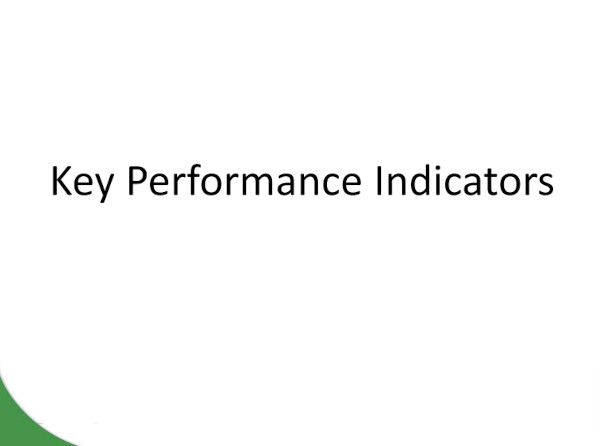
marshall.edu
11. Key Performance Indicators Guideline Example
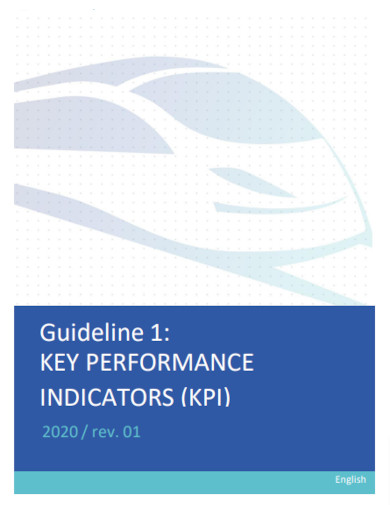
irqb.org
12. Example Template for Designing Key Performance Indicators
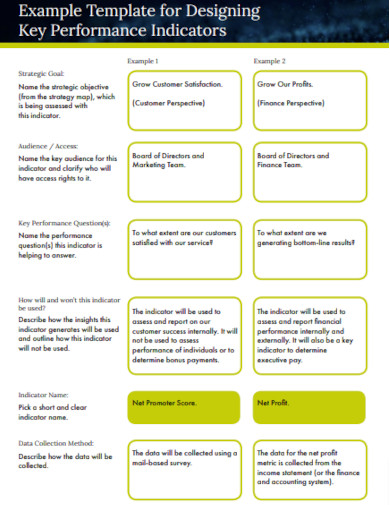
bernardmarr.com
13. Developing Methodology and Key Performance Indicators
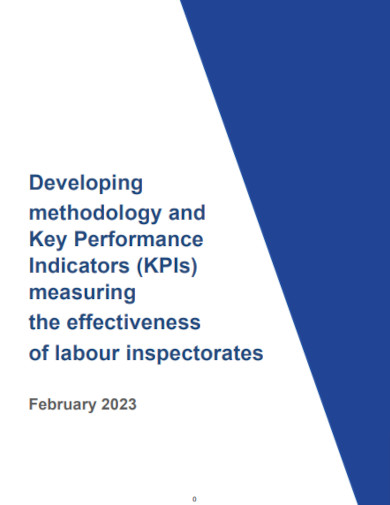
ela.europa.eu
14. Printable Key Performance Indicators Example
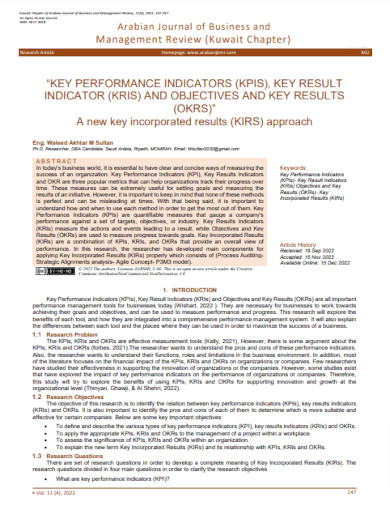
arabianjbmr.com
15. Applying Key Performance Indicators to Build Your Business
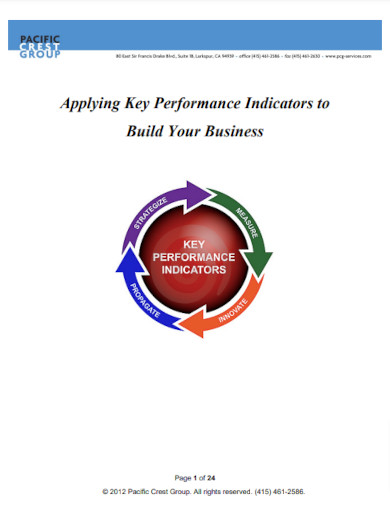
pcg-services.com
16. Collecting Data and Measuring Key Performance Indicators
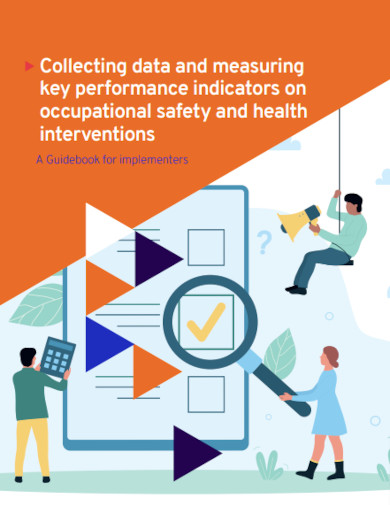
ilo.org
17. Key Performance Indicators Quality Assurance Office
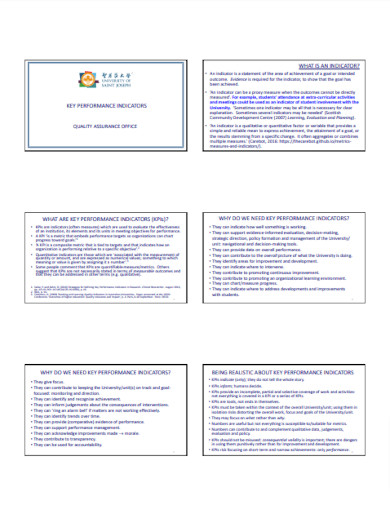 usj.edu.mo
usj.edu.mo18. Detailed Procedure for calculation of Key Performance Indicators
 cercind.gov.in
cercind.gov.in19. Fatigue Key Performance Indicators Example
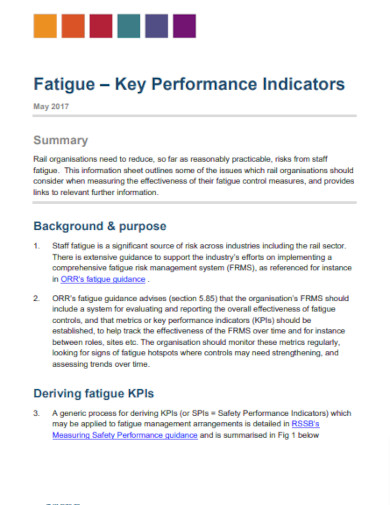 tc.canada.ca
tc.canada.ca20. Key Performance Indicators for Internal Audit
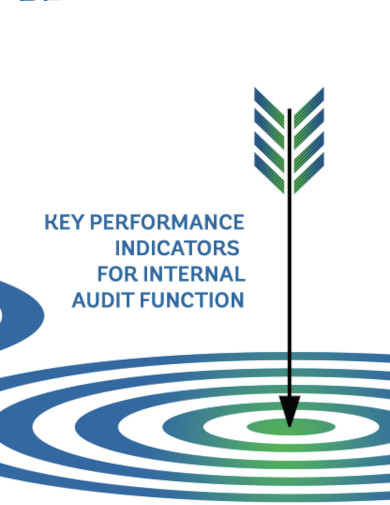 iiabelgium.org
iiabelgium.org21. Key Performance Indicators in Hospitality Industry
 arcjournals.org
arcjournals.org22. Create Key Performance Indicators Example
 help.sap.com
help.sap.com23. Managing Energy Using Key Performance Indicators
 assets.new.siemens.com
assets.new.siemens.com24. Visualizing Key Performance Indicators using the GKPI Procedure
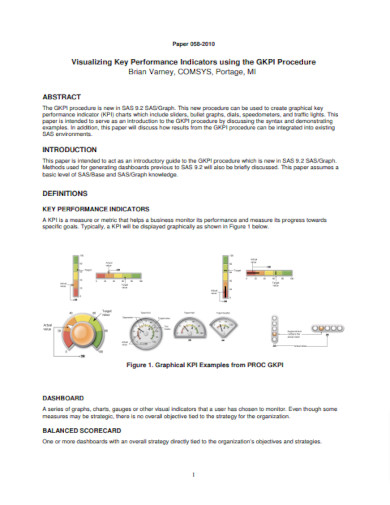 support.sas.com
support.sas.com25. Key Performance Indicators for Security Operations and Incident Response
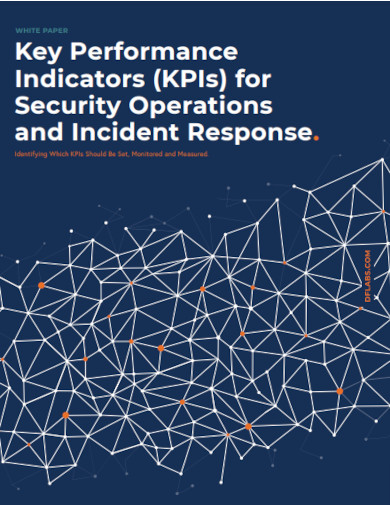
acadiatech.com
26. Global Conservation Key Performance Indicators Workshop
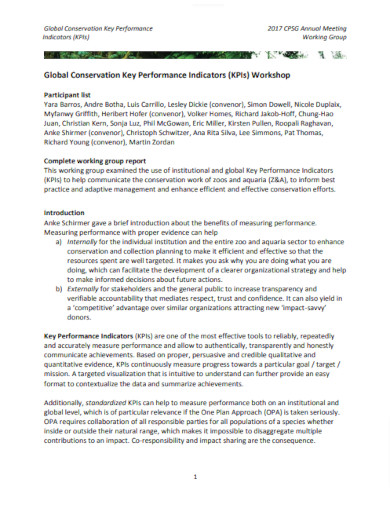
cpsg.org
27. Key Performance Indicators in Radiology Example

is3r.org
28. Systematic Literature Review of Key Performance Indicators

researchgate.net
29. Key Performance Indicators Quick Reference Card
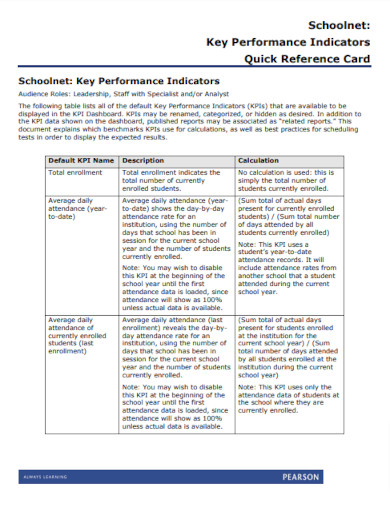
support.powerschool.com
30. Key Performance Indicators for Distribution Example
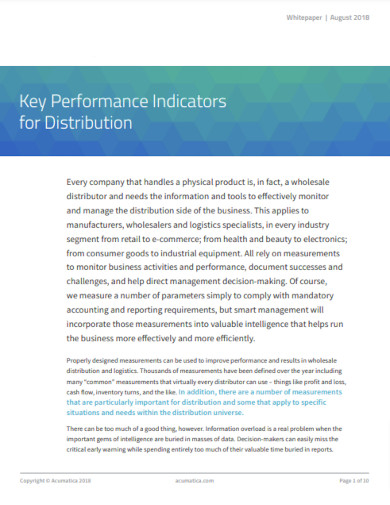
pcbennett.com
31. Key Performance Indicators Definition and Action
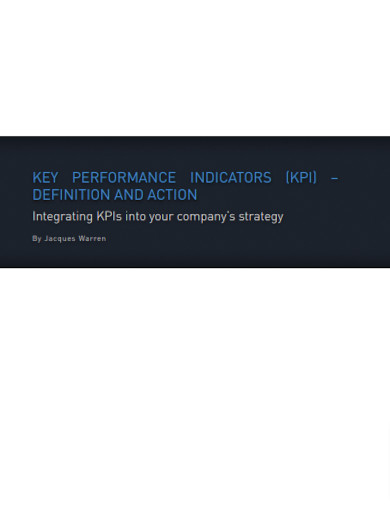
kwantyx.com
32. Procedure for Selecting Key Performance Indicators for Sustainable Manufacturing

tsapps.nist.gov
33. Key Performance Indicators and Priority Setting Example
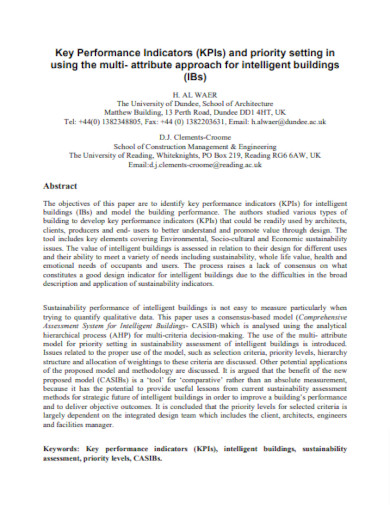
irbnet.de
34. Key Performance Indicators in Public-Private Partnerships
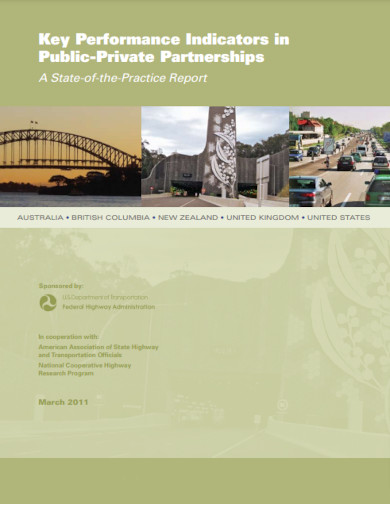
international.fhwa.dot.gov
35. Recommended Key Performance Indicators for Operational Management

nrel.gov
36. Key Performance Indicators for Integrating Maintenance Management

hal.science
37. Developing Key Performance Indicators Example

spectrum.library.concordia.ca
What are Key Performance Indicators?
Key Performance Indicators, or KPIs, are quantifiable measures that businesses use to track, monitor, and assess the success of various operations and processes. They provide a numerical basis to evaluate the effectiveness of business strategies, helping organizations to understand if they are achieving their key objectives. KPIs can be related to any aspect of a business, from financial performance and customer satisfaction to employee productivity and more.
How to create Key Performance Indicators
Before we delve into the steps of creating KPIs, it’s important to understand that the process requires a clear understanding of your business goals, a commitment to data-driven decision making, and a willingness to adapt and refine your KPIs as your business evolves.
Step 1: Define Your Business Goals
The first step in creating KPIs is to clearly define your business goals. These goals should align with your organization’s core values and could be influenced by various factors such as market trends, customer needs, and competitive landscape.
Step 2: Identify Critical Success Factors
Once your goals are defined, identify the critical success factors (CSFs) that will contribute to achieving these goals. CSFs are the essential areas of activity that must be performed well to achieve your business goals. For example, if your goal is to improve customer satisfaction, a CSF might be reducing response times to customer inquiries.
Step 3: Develop Performance Measures
Next, develop performance measures for each CSF. These measures should be quantifiable and directly linked to the success of your CSFs. For instance, you might measure the average response time to customer inquiries.
Step 4: Implement, Monitor, and Refine Your KPIs
Finally, implement your KPIs, monitor them regularly, and refine them as necessary. Use tools like a 14+ Dashboard for real-time monitoring and consider 10+ Performance Analysis Report Examples and 17+ Performance Report Examples to understand how to present and analyze your KPI data.
FAQs
1. How many KPIs should a business have?
There’s no one-size-fits-all answer to this question. The number of KPIs a business should have depends on its size, industry, and specific goals. However, it’s important to focus on a manageable number of highly relevant KPIs to avoid information overload.
2. How often should KPIs be reviewed?
KPIs should be reviewed regularly to ensure they’re still relevant and helpful. The frequency of review will depend on the nature of the KPI and the pace of change in your business and industry.
3. Can KPIs change over time?
Yes, KPIs can and should change over time. As your business evolves, your KPIs should be updated to reflect new goals, challenges, and opportunities.
KPIs are a powerful tool for businesses, providing a clear, quantifiable way to measure success and drive improvement. By defining clear goals, identifying CSFs, developing performance measures, and regularly reviewing and refining your KPIs, you can create a robust performance management system. For further insights, explore resources like 35+ Balanced Scorecard, 19+ Leadership Development Plan Examples, 24+ Employee Checklist Examples & Templates, 34+ Employee Recognition, Technical Skills, and 8+ Employees Training Program Examples in PDF.
36+ Key Performance Indicators Examples to Download
In the dynamic world of business, understanding and optimizing performance is crucial. This article provides a comprehensive guide to Key Performance Indicators (KPIs), a tool that can help businesses measure their success and drive growth. We will delve into the process of creating KPIs, answer some frequently asked questions, and provide references to related articles for further reading.
1. KPI Performance Review Template

Details
File Format
Word
Google Docs
Size: 36 KB
2. Free KPI Report Template

Details
File Format
Word
Google Docs
Apple Pages
Size: 19 KB
3. KPI Presentation Template

Details
File Format
PowerPoint
Google Slides
Apple Keynote
PDF
Size: 30 KB
4. Free KPI Chart Template

Details
File Format
Excel
Google Sheets
Size: 37 KB
5. Free KPI Data Chart

Details
File Format
Excel
Google Sheets
Size: 32 KB
6. Guide to Key Performance Indicators Example

pwc.com
Details
File Format
PDF
Size: 926 KB
7. Basic Key Performance Indicators Example

cef-see.org
Details
File Format
PDF
Size: 926 KB
8. Developing Meaningful KPIs Example

intrafocus.com
Details
File Format
PDF
Size: 2 MB
9. Measuring Registry Key Performance Indicators

learn.rarediseases.org
Details
File Format
PDF
Size: 93 KB
10. Editable Key Performance Indicators Example

marshall.edu
Details
File Format
PDF
Size: 477 KB
11. Key Performance Indicators Guideline Example

irqb.org
Details
File Format
PDF
Size: 926 KB
12. Example Template for Designing Key Performance Indicators

bernardmarr.com
Details
File Format
PDF
Size: 59 KB
13. Developing Methodology and Key Performance Indicators

ela.europa.eu
Details
File Format
PDF
Size: 799 KB
14. Printable Key Performance Indicators Example

arabianjbmr.com
Details
File Format
PDF
Size: 515 KB
15. Applying Key Performance Indicators to Build Your Business

pcg-services.com
Details
File Format
PDF
Size: 1 MB
16. Collecting Data and Measuring Key Performance Indicators

ilo.org
Details
File Format
PDF
Size: 838 KB
17. Key Performance Indicators Quality Assurance Office
 usj.edu.mo
usj.edu.mo
Details
File Format
PDF
Size: 896 KB
18. Detailed Procedure for calculation of Key Performance Indicators
 cercind.gov.in
cercind.gov.in
Details
File Format
PDF
Size: 594 KB
19. Fatigue Key Performance Indicators Example
 tc.canada.ca
tc.canada.ca
Details
File Format
PDF
Size: 292 KB
20. Key Performance Indicators for Internal Audit
 iiabelgium.org
iiabelgium.org
Details
File Format
PDF
Size: 988 KB
21. Key Performance Indicators in Hospitality Industry
 arcjournals.org
arcjournals.org
Details
File Format
PDF
Size: 497 KB
22. Create Key Performance Indicators Example
 help.sap.com
help.sap.com
Details
File Format
PDF
Size: 3 MB
23. Managing Energy Using Key Performance Indicators
 assets.new.siemens.com
assets.new.siemens.com
Details
File Format
PDF
Size: 219 KB
24. Visualizing Key Performance Indicators using the GKPI Procedure
 support.sas.com
support.sas.com
Details
File Format
PDF
Size: 216 KB
25. Key Performance Indicators for Security Operations and Incident Response

acadiatech.com
Details
File Format
PDF
Size: 219 KB
26. Global Conservation Key Performance Indicators Workshop

cpsg.org
Details
File Format
PDF
Size: 605 KB
27. Key Performance Indicators in Radiology Example

is3r.org
Details
File Format
PDF
Size: 2 MB
28. Systematic Literature Review of Key Performance Indicators

researchgate.net
Details
File Format
PDF
Size: 608 KB
29. Key Performance Indicators Quick Reference Card

support.powerschool.com
Details
File Format
PDF
Size: 121 KB
30. Key Performance Indicators for Distribution Example

pcbennett.com
Details
File Format
PDF
Size: 438 KB
31. Key Performance Indicators Definition and Action

kwantyx.com
Details
File Format
PDF
Size: 337 KB
32. Procedure for Selecting Key Performance Indicators for Sustainable Manufacturing

tsapps.nist.gov
Details
File Format
PDF
Size: 277 KB
33. Key Performance Indicators and Priority Setting Example

irbnet.de
Details
File Format
PDF
Size: 157 KB
34. Key Performance Indicators in Public-Private Partnerships

international.fhwa.dot.gov
Details
File Format
PDF
Size: 2 MB
35. Recommended Key Performance Indicators for Operational Management

nrel.gov
Details
File Format
PDF
Size: 582 KB
36. Key Performance Indicators for Integrating Maintenance Management

hal.science
Details
File Format
PDF
Size: 275 KB
37. Developing Key Performance Indicators Example

spectrum.library.concordia.ca
Details
File Format
PDF
Size: 2 MB
What are Key Performance Indicators?
Key Performance Indicators, or KPIs, are quantifiable measures that businesses use to track, monitor, and assess the success of various operations and processes. They provide a numerical basis to evaluate the effectiveness of business strategies, helping organizations to understand if they are achieving their key objectives. KPIs can be related to any aspect of a business, from financial performance and customer satisfaction to employee productivity and more.
How to create Key Performance Indicators
Before we delve into the steps of creating KPIs, it’s important to understand that the process requires a clear understanding of your business goals, a commitment to data-driven decision making, and a willingness to adapt and refine your KPIs as your business evolves.
Step 1: Define Your Business Goals
The first step in creating KPIs is to clearly define your business goals. These goals should align with your organization’s core values and could be influenced by various factors such as market trends, customer needs, and competitive landscape.
Step 2: Identify Critical Success Factors
Once your goals are defined, identify the critical success factors (CSFs) that will contribute to achieving these goals. CSFs are the essential areas of activity that must be performed well to achieve your business goals. For example, if your goal is to improve customer satisfaction, a CSF might be reducing response times to customer inquiries.
Step 3: Develop Performance Measures
Next, develop performance measures for each CSF. These measures should be quantifiable and directly linked to the success of your CSFs. For instance, you might measure the average response time to customer inquiries.
Step 4: Implement, Monitor, and Refine Your KPIs
Finally, implement your KPIs, monitor them regularly, and refine them as necessary. Use tools like a 14+ Dashboard for real-time monitoring and consider 10+ Performance Analysis Report Examples and 17+ Performance Report Examples to understand how to present and analyze your KPI data.
FAQs
1. How many KPIs should a business have?
There’s no one-size-fits-all answer to this question. The number of KPIs a business should have depends on its size, industry, and specific goals. However, it’s important to focus on a manageable number of highly relevant KPIs to avoid information overload.
2. How often should KPIs be reviewed?
KPIs should be reviewed regularly to ensure they’re still relevant and helpful. The frequency of review will depend on the nature of the KPI and the pace of change in your business and industry.
3. Can KPIs change over time?
Yes, KPIs can and should change over time. As your business evolves, your KPIs should be updated to reflect new goals, challenges, and opportunities.
KPIs are a powerful tool for businesses, providing a clear, quantifiable way to measure success and drive improvement. By defining clear goals, identifying CSFs, developing performance measures, and regularly reviewing and refining your KPIs, you can create a robust performance management system. For further insights, explore resources like 35+ Balanced Scorecard, 19+ Leadership Development Plan Examples, 24+ Employee Checklist Examples & Templates, 34+ Employee Recognition, Technical Skills, and 8+ Employees Training Program Examples in PDF.

